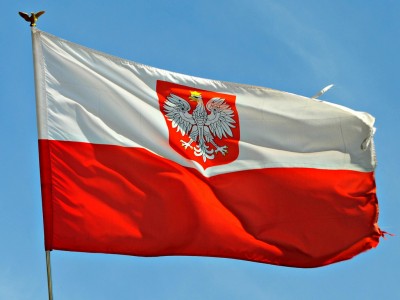Phantom Borderlands: Poland’s Lost Identity Within a Neoliberal Paradigm

All Global Research articles can be read in 51 languages by activating the Translate Website button below the author’s name (only available in desktop version).
To receive Global Research’s Daily Newsletter (selected articles), click here.
Click the share button above to email/forward this article to your friends and colleagues. Follow us on Instagram and Twitter and subscribe to our Telegram Channel. Feel free to repost and share widely Global Research articles.
Global Research Referral Drive: Our Readers Are Our Lifeline
***
Polish concept of Kresy (Eastern Borderlands) remains one of the recognised phantoms typical especially for the Central Europe. Myth of the Polish–Lithuanian Commonwealth eastern lands experiences a real renaissance in today’s Poland, what seems to be confusing in a society to some extend unrooted, with regional identity lost in result of population movements after World War 2 and class consciousness distracted first during the communistic period and then within neo-liberal paradigm.
Reality of the Myths
About two million people were resettled from the areas that were annexed to Soviet Lithuania, Latvia, Belarus and Ukraine after 1945 to the present Polish western territories, but today more than 15 million Poles admit their ties to Kresy and this number is constantly growing, despite even hard archival data on population migration. In terms of scale, it can be compared to the phenomenon of the Expellees (Heimatvertriebene), present in the German consciousness, following the German sentiment for “the lost lands”, the position of Karelia as a part of the Finns’ identity or the Hungarians phantom pains after Trianon. Of course, all these issues have their own political role, but they are, above all, important elements of collective consciousness, national self-identification and identity built on memory, to a large extent in Poland and Ukraine created secondarily by the media and politics, originally in the period of declining real socialism (late 1980s), and then in the 21st Century. Let’s emphasise, just because something is a myth does not mean it does not exist, but often, just the opposite. So, we are dealing with borders and Borderlands existing in human minds, although they refer to the political reality from 75 years or even centuries ago. What is particularly important a similar phenomenon can be observed in Ukraine both in relation to the lands currently within the borders of Poland, like so called Zakerzonia.
The Paradises Lost
Almost every Central European nation has its own phantom paradise lost, as Western Thrace for Bulgarians, Transylvania for Hungarians, Kosovo and Krajina for Serbs. Northern Ireland experience is also not far away from such a mechanism. We must be aware that the issues we are discussing are often at odds not only with state ideologies, but also with other and dominant political myths of these nations (“historical politics”), and yet they show not only considerable vitality, but also adaptive abilities, as well as development, affecting subsequent age and class groups. Of course, this can be seen as a natural influence of the national mythology on public discourse, but it is at least as important to determine how public discourse, especially the media message, shaped the present consciousness of the Borderlands and that way influenced the framework of social memory.
Monumental New History
The question of the Polish-Ukrainian borderland, especially in its pre-WW2 shape, could seem to be a purely historical issue, evoking some political reminiscences, but very regional ones. However, assuming Foucault’s assumption about the deconstruction of the traditionally understood “antiquarian history” by effective history, we understand that our historical memory is something dynamic and changeable. Media and politics have a significant impact on memory shaping, both by deconstructing the unfamiliar facts and by weaving new concepts and associations. On the one hand, we are dealing with a specific annihilation of a long time, with its replacement by a sequence of images deprived of their former meanings. At the same time, however, a monumental new memory is created on such a basis, both in the individual (media memories) and social dimension, in accordance with the interests of the leaders and trustees of collective memory. This process, in turn, can be tracked by examining direct communication, including the one through social media.
How to Use the Phantoms
Following the social identity theory, this allows not only to preserve a specific scope of memory about the former glory associated with ruling over such huge areas of Eastern Europe, but also to refer to the experience of tragedies, like the Volhynian Massacre for the Poles (perpetuated by the Ukrainian Nazi collaborators during the WW2), as well as the loss of lands and displacement as general experience. Collective memories co-creating social boundaries, thus territorialise themselves. As it can be assumed, the connection of this media memory with the spatial issue may be related to its attractiveness for capital. That interdependence perfectly explains current geopolitical events, and also allows us to predict the forthcoming ones, such as possible tensions on the phantom borderlands of Ukraine with Poland, Romania and Hungary.
Thinking about the Poles, Ukrainians, but also Russians and other Easter Europeans ideologization on the one hand and mythologisation on the other are two factors influencing the historical dialogue, obviously not to change the past, but to influence the future of these nations. And that is very hard find and easy solution to these tensions, apart from a rejection of both of these paradigms, myth and ideology. However, this dialogue must be conducted as part of a broader project of returning to the principle of nation states and nations governed by well-understood self-interests, being also the true basis of a well-understood and purposeful internationalism.
*
Note to readers: Please click the share button above. Follow us on Instagram and Twitter and subscribe to our Telegram Channel. Feel free to repost and share widely Global Research articles.
Konrad Rękas is a regular contributor to Global Research.

